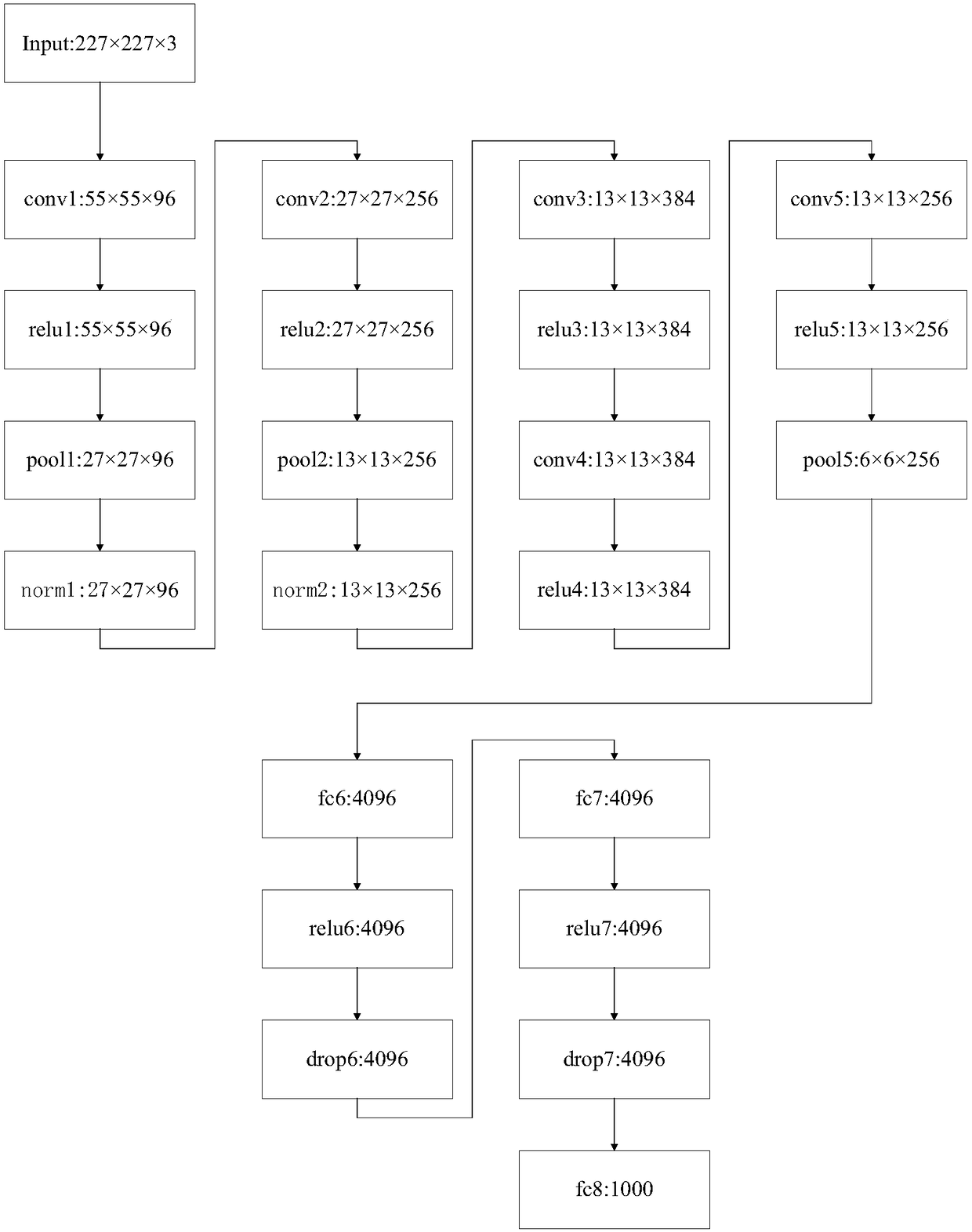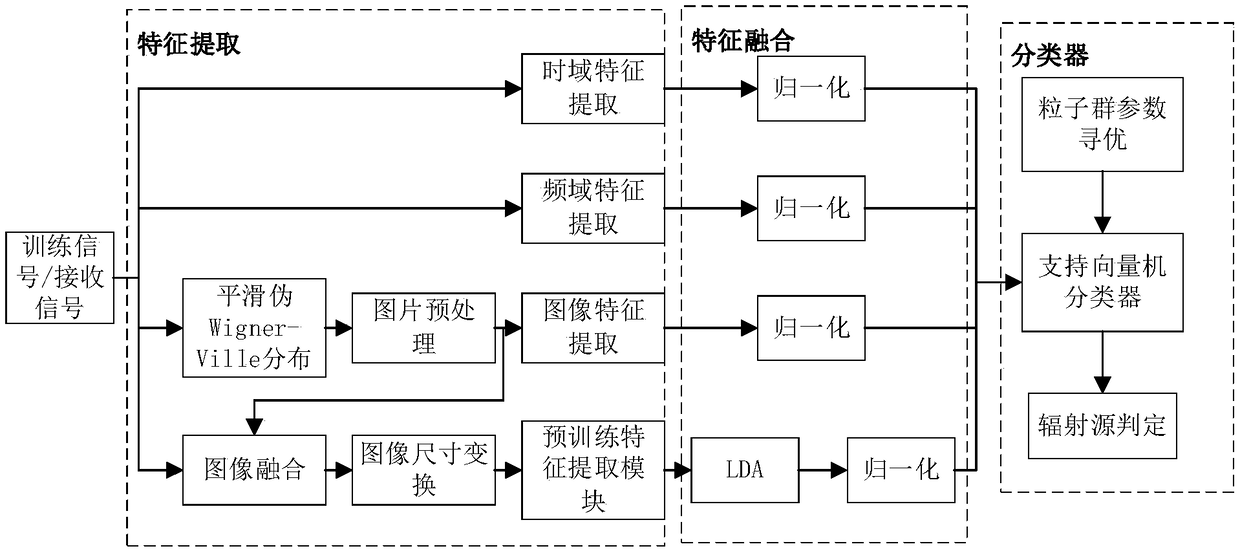Radar radiation source identification method based on feature fusion
A feature fusion and identification method technology, applied in radio wave measurement systems, instruments, etc., can solve the problems of reducing the operation speed of the classifier and affecting the effect of radiation source identification, so as to eliminate noise and redundant information, and improve the robustness of extraction. , Accurate effect of time-frequency image feature extraction method
- Summary
- Abstract
- Description
- Claims
- Application Information
AI Technical Summary
Problems solved by technology
Method used
Image
Examples
Embodiment Construction
[0027] The specific embodiments of the present invention will be described below in conjunction with the accompanying drawings.
[0028] The invention can analyze signals from time domain, frequency domain and time-frequency domain respectively, and realizes a new method for radar radiation source identification by extracting various unintentional modulation features. It is used to solve the problems of low applicability, poor reliability and difficult identification of radiation sources extracted from unintentional modulation features. Include the following steps:
[0029] Step 1: According to the parameter values of the five types of radar signals provided in Table 1, add the unintentional modulation characteristics of the radar signals in Table 2, and generate the unintentional modulation radar signal set x composed of FRANK, P1, P2, P3, and P4 i (t), t is time.
[0030] Table 1
[0031]
[0032] Table 2
[0033]
[0034] Step 2: First extract the unintentional ...
PUM
 Login to View More
Login to View More Abstract
Description
Claims
Application Information
 Login to View More
Login to View More - R&D
- Intellectual Property
- Life Sciences
- Materials
- Tech Scout
- Unparalleled Data Quality
- Higher Quality Content
- 60% Fewer Hallucinations
Browse by: Latest US Patents, China's latest patents, Technical Efficacy Thesaurus, Application Domain, Technology Topic, Popular Technical Reports.
© 2025 PatSnap. All rights reserved.Legal|Privacy policy|Modern Slavery Act Transparency Statement|Sitemap|About US| Contact US: help@patsnap.com



